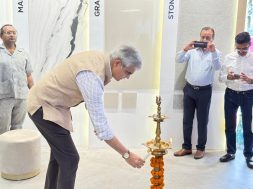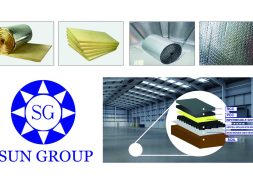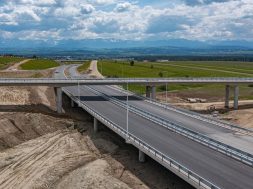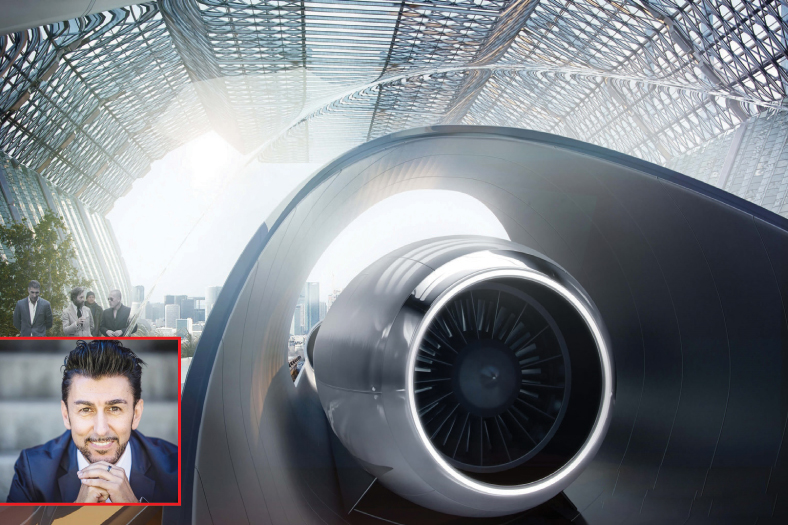Steel building is like an investment in gold for future generation
Steel building is like an investment in gold for future generationAccording to Ravi Singh, Senior Vice President and Head Marketing, Essar Steel, “Most marquee buildings in the world are steel intensive, and good urban infrastructure is a tourism beacon.”
The steel production causes less pollution than most other industrial materials like cement. Even steel can be recycled 100 per cent, and its value generally appreciates over time while other building materials depreciates over the time. In an interaction with Anurag More, Ravi Singh shared the changing trend in Indian steel industry and how to propel its growth.
The demand for high-strength steel in construction and infrastructure sector is gradually increasing. How do you see the current consumption?The consumption of high strength steels in construction and infrastructure is increasing in designs due to better understanding of advantages of high-strength steels in building structures. The current cement to steel ratio in India is only about 0.3 which is much lower than the benchmark in advanced countries. Taller buildings tend to cost less when they are made from high-strength steel framing due to lower foundation costs, faster delivery, and lower labour cost and skill level. Similarly, long-span bridges use high-strength steels, and this can significantly affect cost of bridge construction. Given the above, we do expect to see increase in steel intensity consumption in construction sector.
Please discuss on the pattern of consumption.Construction has three major segments of consumption: industrial, commercial and residential. We have infrastructure industries like power plants, roads, railways, ports, and urban infrastructure. The industrial construction has matured in its preference for steel buildings due to speed of construction, low maintenance, sustainability, lower depreciation, etc. However, India is yet to see a major growth of steel-intensive buildings in commercial and residential space. Most attractively, designed commercial buildings tend to be of steel framing like airports and stadiums, but the proliferation of the same in malls, office buildings is in nascent stages.
Similarly, in bridge construction steel has many advantages both as basic construction material and as sacrificial scaffolding, but the current use is limited to road over bridges in the country. Use of steel flyovers can help in rapid debottlenecking of traffic in cities. Also, use of steel for metro and mono rail structures can provide solace to urban Indians. Steel tends to be preferred in areas where its inherent strengths are too great to be overlooked as in power plant structures, wind towers, transmission towers, safety guard rails, etc.
Brief us on the potential areas and unique advantages of using steel in construction and infrastructure sector.Steel is an excellent construction material. Global steel production is 1,500 million tonnes which is almost half of the total cement production. A steel building is like an investment in gold for the future generation.
Steel does not work well in prolonged contact with water and oxygen interface and faces safety issues in fires where temperature can grow more than 500 C. In all other applications, steel buildings can be erected faster, more safely, with lower skilled manpower. They also offer lower maintenance cost in use, more flexibility in alterations and are more amenable to creative designing. In fact, most marquee buildings in the world are steel intensive, and good urban infrastructure is a tourism beacon.
Are there enough measures taken by the government and different agencies to encourage use of steel in the infrastructure sector?In India, there is no special focus on promoting steel buildings. Steel is a decentralised industry and open to private players. The government does not interfere in the operation of the steel plants and neither is it tasked with incentivising growth of steel intensive construction. However, the preference of steel for most airports buildings and stadiums by the government agencies has helped spur use of steel in construction in India. INSDAG, a quasi government body, has been also trying to increase steel intensity in construction by creating 5,000 fabricators in rural areas, providing steel friendly designs for rural areas, building prototypes of steel houses, and training various stakeholders on latest steel codes.
The responsibility to increase steel in construction is tasked to the private sector who would take the decision based on the attractiveness of the sector. It is nice to see that private investments in fabrication and steel intensive construction have been increasing in the last few years, and designers are now more amenable to using steel-based designs in their building architecture.
The market space of high-strength steel was largely dominated by MNCs. How is the status now?It is a historical fact that India did not have good plate mills for a long time. Our first plate mill was in Bhilai which started in 1980s. However, situation has considerably changed since then. Today, all the high strength steels needed for construction and infrastructure are available in the country. Not only that the most sophisticated steels which are used for battle tanks and missile launchers are also available in the country. If imports still happen it is due to ignorance or non-technical, non-commercial reasons, and they will continue to reduce.
It is also very critical for India to depend on domestic high-strength plates for its development because the high-strength plates tend to be used in the most critical parts of the modern equipment. If Indian manufacturing is to grow on world stage, it must use Indian plates so that its crucial strengths can use the latest developments in steel making and brand India grows globally.
Do the Indian steel producers capable enough to meet the increasing demand?Yes, the Indian steel producers are capable of delivering all the steel requirements of the country as they have already invested in capacity expansion foreseeing a GDP growth of 10 per cent with relevant steel intensity factor. Essar Steel has one of the best mills in Asia with all the modern facilities of quench and temper, furnace normalised plates, thermo-mechanically cooled plates along with capabilities in metallurgy to produce quality steels.
What are the challenges the steel producers are facing today and how is the industry coping with those challenges?Steel producers in India are facing multiple challenges. They have invested in capacity expansion based on forecast GDP growth, but demand is still to pick up. In fact, many steel consuming sectors have actually shrunk. Steel mills are stressed with very high input material prices which have altered the industry structure to the detriment of Indian steel mills. The infrastructure sector in the country as a whole is not growing at the envisaged rate. The power generation capacity, road building, and railways expansion are growing at the envisaged rate. The excessive dependence on private partnerships to fund infrastructure growth has been stymied by frequent policy reversals and unclear business models. As the steel is a core sector industry, it is affected by various macro-economic trends in the economy.
Please discuss on the innovations at this space as far as your company is concerned.Essar Steel has been at the forefront of innovation in the steel industry in India for several years. Our hot-rolled coils were famous for their flatness and clean metallurgy. We make steel using gas-based DRI which is costly but a green technology compared to other iron-making technologies. We make iron using three processes: gas-based DRI, blast furnace and Corex. We make steel using EAFs and Conarc technologies and roll it in hot strip mill, compact strip plant and plate mill.
In the past 1 year, we have supplied heavy plates for several industries and replaced imports happening in the country. We have supplied heavy plates for subsea tankage applications, war ships, high-rise cranes, heavy-duty excavators, hydro power projects, power plant, structural, and many other applications. We have innovated in steel distribution by creating India’s largest steel distribution network and also creating India’s largest steel processing capability. We are a unique mill which also makes large-diameter pipes and fabrication structurals. As a mill with a private port jetty, we participate in substantial coastal shipping which again is the greenest form of transportation as it causes only 3 grams of CO2 emission for every kilogram of logistic.
What is your reaction on the budget for steel industry?We are happy to note that the budget was a balanced one, and despite pressures the finance minister has restricted soft scheme expenses. We would have liked to see more infrastructure spending, protection duty against FTA countries dumping into India, concrete plans to reduce fiscal deficit etc., but guess we need to wait. As a country, on the whole, we seem to be on the right path but need to speed up the reforms quickly.
Cookie Consent
We use cookies to personalize your experience. By continuing to visit this website you agree to our Terms & Conditions, Privacy Policy and Cookie Policy.






